Exciting evidence for Bronze Age activity has been uncovered at Drumgood, near Enniscorthy in Co. Wexford. This newly discovered site consists of a very large sub-circular enclosure, inside which, are at least three Bronze Age houses. It was excavated by Graham Hull of TVAS Ltd, who very kindly gave me a tour of the site just before Christmas.
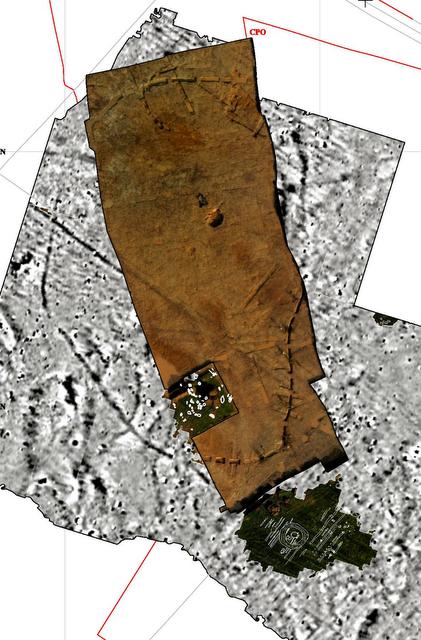
Somewhat unusually, in an Irish context, the Bronze Age houses were enclosed by a curving ditch, defining an area approximately 185 m by 125 m in size. The interior was accessed via an earthen causeway, while finds (pottery) recovered from the ditch fills indicate that it dates from the Late Bronze Age (c. 900 – 600 BC).
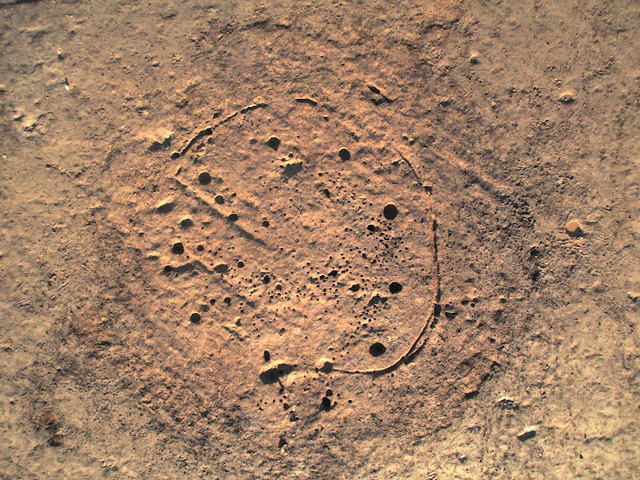
Centrally placed within enclosure were the remains of two circular structures. The larger of the two buildings measured circa 8m across and was defined by a curving slot-trench, which most likely acted as foundation for a wooden wall. Inside the structure there was a circuit of large post-holes that probably held roof-supporting timbers, while a series of small stakeholes may have defined internal divisions. The entrance into the building was marked by a broadly south-facing porch, whose floor was cobbled in small stones (to combat wear and tear).
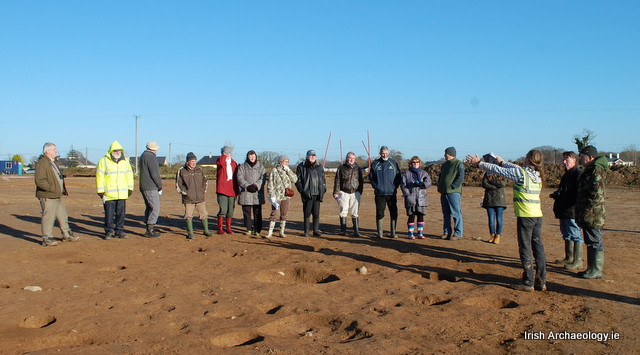
A short distance to the south of this structure was a second, slightly smaller, circular building. Although evidence for an enclosing slot-trench was largely absent, it had a similar layout to the previous building and appeared to be broadly contemporary. Finds recovered from the two structures included Late Bronze Age pottery (c. 900 – 600 BC) and quern stone fragments (for grinding grain into flour).
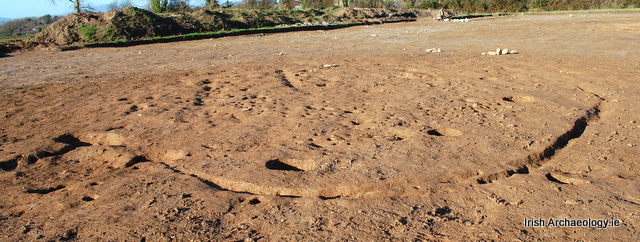
A third circular building was also identified near the southern edge of the site. It is currently thought that this may be slightly earlier in date that the Late Bronze Age enclosure (there was also evidence for Neolithic and Medieval activity at the site).
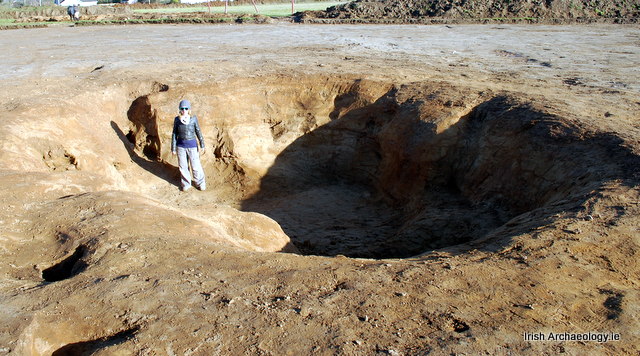
One of the more unusual features identified at Drumgoold was an enormous pit, situated to the east of the Late Bronze Age buildings. With steeply sloping and slightly irregular shaped sides, the pit produced huge quantities of Late Bronze Age pottery. The original purpose of this feature is bit of mystery. Located in very sandy, free-draining soil, it was unlikely to have been used as a water-pit/well, while it seems unnecessarily large for the disposal of rubbish. Hopefully specialist analysis of soil samples from the pit will shed further light on its intended function.
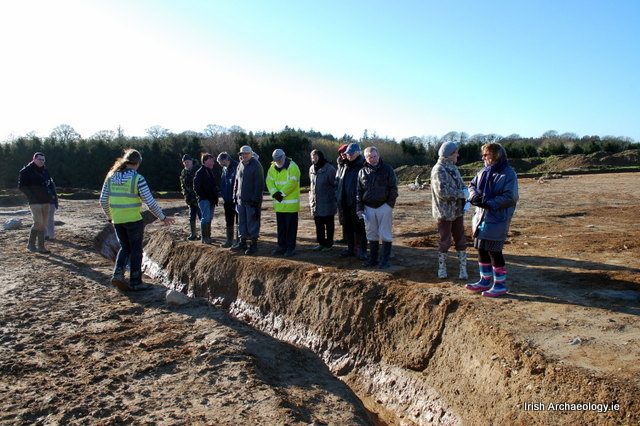
Post-excavation work for this amazing site is on-going and it is hoped that the first findings will be published shortly. I can’t wait to find out more! Thanks very much to Graham Hull and also to James Eogan for allowing me visit this very interesting excavation (which is now finished).
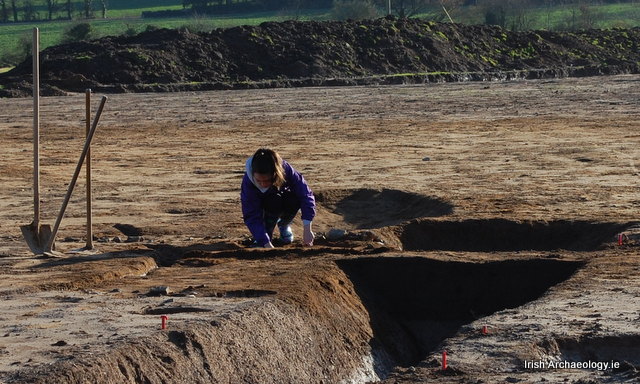

Note
Some excellent aerial images of the excavation by Simon Dowling can be found here
by Colm Moriarty
.



This is a fascinating find! Look forward to hearing more about it in the future.